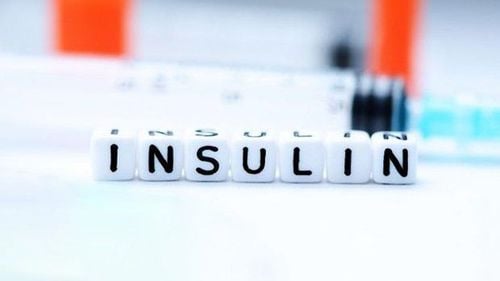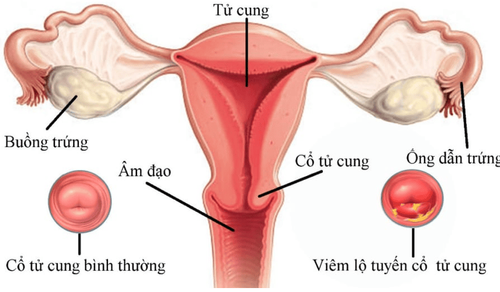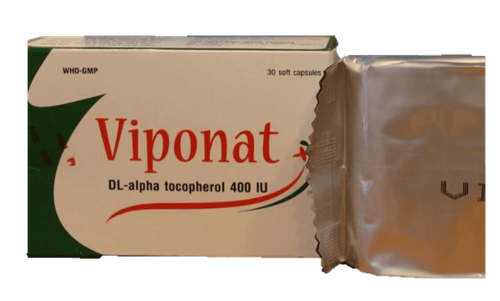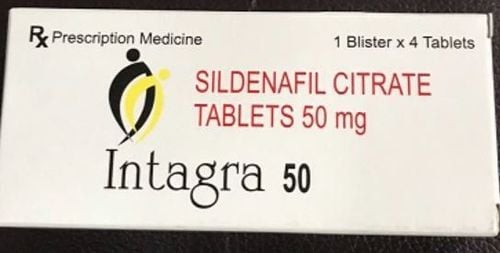This is an automatically translated article.
Secondary infertility occurs in couples who have had children but are unable to conceive or become pregnant after having their first child. There are many causes of secondary infertility. Depending on the individual case, the doctor may treat secondary infertility for either or both partners.
1. Causes of Secondary Infertility
All steps in the process of ovulation and fertilization need to take place correctly in order for a successful conception to be possible. Sometimes the problems causing infertility in couples take place in the womb and sometimes develop later in life.
Infertility causes can affect one or both partners. Overall:
In about a third of cases, the cause is male In about a third of cases, the cause is female. In the remaining cases, the cause is both sexes or no cause is found 1.1 Causes of male infertility Possible causes of male infertility include:
Abnormal sperm production or function due to undescended testicles, genetic defects, health problems such as disease diabetes or an infection such as chlamydia, gonorrhea, mumps, or HIV. Varicose veins can also affect sperm quality. Problems with sperm supply due to sexual problems, such as premature ejaculation; certain genetic diseases such as cystic fibrosis. Problems causing blockage in the testicles or trauma to the reproductive organs. Overexposure to harmful environmental factors such as pesticides, chemicals and radiation. Smoking, alcohol, marijuana, anabolic steroids, and medications used to treat bacterial infections, high blood pressure, and depression can also affect fertility. Frequent exposure to heat, such as using a sauna or hot tub, can increase body temperature and may affect sperm production. Damage from cancer and cancer treatments such as radiation or chemotherapy reduce sperm production.

Tiếp xúc với thuốc lá có thể là nguyên nhân gây vô sinh ở nam giới
1.2 Causes of female infertility Ovulation disorders, which affect the release of eggs from the ovaries. These include hormonal disorders such as polycystic ovary syndrome, or too much thyroid hormone (hyperthyroidism) or too little (hypothyroidism) which can affect the menstrual cycle or cause infertility. Other underlying causes may include too much exercise, an eating disorder, or a tumor. Abnormal shape of the uterus or cervix, polyps in the uterus. Noncancerous (benign) tumors in the wall of the uterus (uterine fibroids) can cause infertility by blocking the fallopian tubes or preventing a fertilized egg from implanting in the uterus. Damage or blockage of the fallopian tubes, often due to inflammation of the fallopian tubes. The etiology of this pathology can be the result of pelvic inflammatory disease caused by a sexually transmitted infection, endometriosis, or uterine adhesions. Endometriosis occurs when endometrial tissue grows outside the uterus, affecting the function of the ovaries, uterus, and fallopian tubes. Primary ovarian failure (early menopause), when the ovaries stop working and menstruation ends before age 40. Although the cause is often unknown, several factors are associated with early menopause, including: immune system disease, some genetic diseases such as Turner syndrome or fragile X syndrome gene carriers and treatment with radiation or chemotherapy.
Pelvic adhesions, bands of scar tissue that connect surrounding organs can form after a person has a pelvic infection, appendicitis, endometriosis, or abdominal or pelvic surgery. Cancer and cancer treatments. Certain cancers, especially cancers of the reproductive system, often impair a woman's fertility. In addition, both radiation and chemotherapy affect fertility.
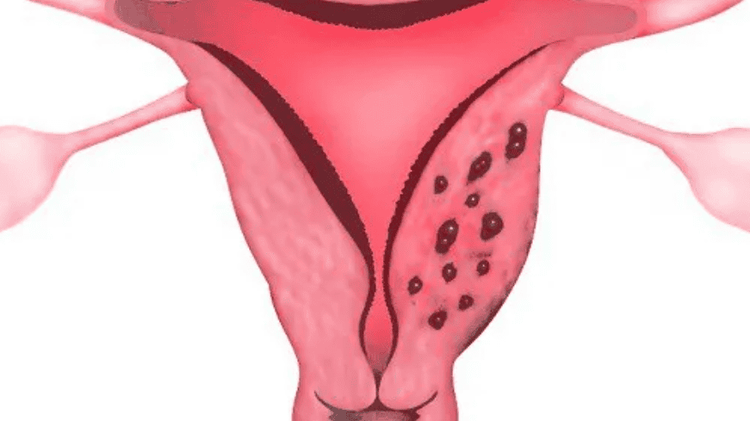
Tình trạng lạc nội mạc tử cung có thể ảnh hưởng đến chức năng của buồng trứng
2. How to cure secondary infertility
Secondary infertility treatment depends on:
The cause of the infertility. Note, some causes of infertility cannot be cured. Infertility duration Patient's age (both male and female) Personal aspirations In cases where a natural pregnancy is not possible, couples can still become pregnant through the use of assisted reproductive technology.
2.1 Treatment for men In general, men's treatment should address sexual problems or lack of healthy sperm such as:
Change lifestyle factors: Improve lifestyle and certain behaviors Certain medications can improve your chances of getting pregnant such as stopping certain medications, reducing or no exposure to harmful substances, improving the frequency and duration of intercourse, exercising regularly, and improving other factors. Other factors may reduce fertility. Medications: Certain medications can improve sperm count and increase the likelihood of a successful pregnancy. These drugs can increase testicular function, including sperm quality and production. Surgery. For some conditions, surgery can reverse the blockage of sperm and restore fertility.
2.2 Treatment for Women Stimulating ovulation with fertility drugs: Fertility drugs are the mainstay of treatment for women with infertility due to an ovulation disorder. Medicines that regulate the menstrual cycle or induce ovulation. Intrauterine insemination (IUI) - Intrauterine insemination (IUI). During IUI, healthy sperm is placed directly into the uterus around the time the ovaries release one or more eggs. Depending on the cause of the infertility, IUI may be used during a normal menstrual cycle or when the patient is taking fertility drugs. Surgery to restore fertility: Uterine problems such as endometrial polyps, uterine septum, scar tissue in the uterus, and uterine fibroids can be treated with hysteroscopic surgery. Endometriosis, pelvic adhesions, and larger fibroids may require laparoscopic or open surgery.
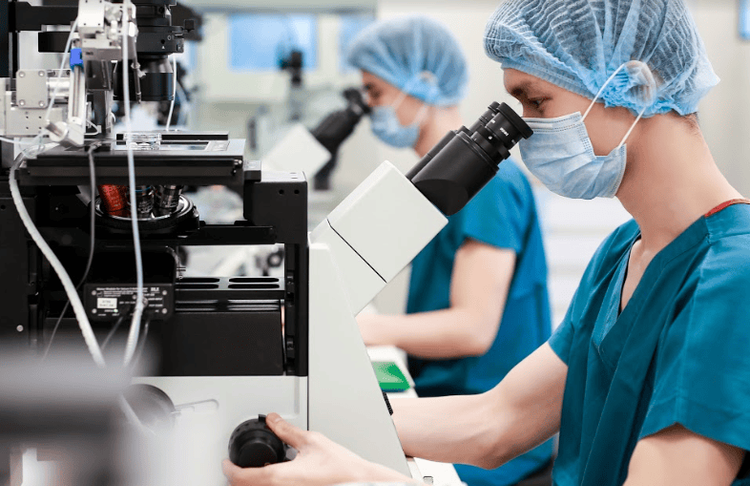
Kỹ thuật timelapse trong điều trị vô sinh bằng phương pháp thụ tinh nhân tạo (IVF)
2.3 Assisted reproductive technology Assisted reproductive technology (ART) is fertility treatments that process eggs and sperm. Currently, there are several assisted reproductive technologies as follows:
In vitro fertilization (IVF) is the most common ART technique. IVF is done by stimulating and taking many mature eggs, then fertilizing them with sperm in a laboratory, and after a few days, the embryos are implanted in the uterus. Other techniques are sometimes used in the IVF cycle, such as:
Intracytoplasmic sperm injection. A healthy sperm is injected directly into the mature egg. The technique is often used when a man has poor quality sperm or a low sperm count or has failed to fertilize previous IVF attempts. Assisted Hatching technique. This technique assists the embryo to implant in the lining of the uterus by opening the outer envelope of the embryo. Donor egg or sperm. Most ART is done using the couple's own eggs and sperm being treated for infertility. However, if there is a serious problem with the egg or sperm, the patient may choose to use eggs, sperm or embryos from a known or anonymous donor. Surrogacy: Women who do not have a normal uterus or if the pregnancy will have serious health risks, the patient can choose IVF combined with surrogacy. In this case, the couple's embryos will be placed in the uterus of the surrogate.
Customers can come to the Center for Reproductive Support - Vinmec International General Hospital. This is the leading center in Vietnam, which has developed and applied a comprehensive medical examination and treatment process, combining both gynecology and obstetrics and gynecology to provide the optimal method for each patient's case.
Advantages when customers choose Vinmec fertility center:
Equipped with modern equipment, clean air system according to international standards to ensure lab quality, single cabinet system to optimize quality embryo, improving the success rate for each cycle of artificial insemination. Implement most advanced assisted reproductive techniques in the world: ICSI (injection of sperm into the oocyte cytoplasm); support embryo escape membrane; Reproductive reserve: embryo freezing, sperm freezing, oocyte freezing to help customers take the initiative in giving birth at will, transferring embryos on day 5, minimizing pregnancy; male infertility techniques (PESA, MESA, TEFNA, TESE) Besides advanced reproductive support methods, a team of excellent doctors in the country and the world, with prestige and long-term experience in the field of infertility .
Please dial HOTLINE for more information or register for an appointment HERE. Download MyVinmec app to make appointments faster and to manage your bookings easily.
References: mayoclinic.org, healthline.com,Recommended video:
Infertility treatments: Hope for infertile and infertile couples




